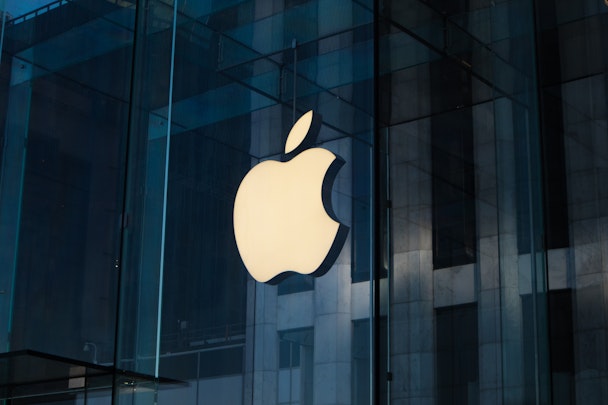Unboxing the Apple effect: the undisputed champions of product launches
How can challenger brands get the Apple effect without an Apple budget? Dan Hall, business director at 2Heads, unboxes the success behind Apple product launches.

2heads unpicks Apple’s success and considers what marketers can learn from its strategy
Apple has long been lauded as the world’s most beloved brand, but what makes its product launches seem like blockbuster movies, and motivates consumers around the world to camp outside its stores?
Fundamentally, Apple succeeds by keeping things simple. It uses the same key principles to launch its products every year with such consistency that its loyal consumer base knows what to expect and is never disappointed. Continuity and slavish adherence to its mission statement is communicated every time.
While famed for innovation, Apple is also not afraid to take others’ ideas and make them better. It is happy to build its brand in its own way, connecting its launches in subtle ways to the industry, but never falling in line. It has a vision and it believes in it – which is why others do too.
Strategic tactics
For a start, Apple makes the most of a slate of proprietary events. Apple famously only ever launches new products at its own events. It makes its consumers wait, and then goes big.
Last year, Apple held three product launches. The largest, its September launch, led into the big consumer spending months of October, November and December, and it went for broke, launching iPhone 13 Pro, iPhone 13, Apple Watch series 7, and the new iPad and iPad Mini.
Supporting these big-ticket events is a raft of stealth marketing efforts. Apple heavily influences industry events such as CES 2022 by dropping big announcements about its accessories during the event. Apple’s Find My Network, a smart door lock feature available on iPhone, was the talk of this year’s show.
They also understand the power of rumor – Apple attends three to four events each year but makes each one count, dropping hints in the press of what’s to come to keep the rumor mill churning and guarantee huge online and physical attendance.
And to build hype and keep conversations going before and after the launches, Apple created its Apple Events app with business leader podcasts. Anyone can tune into past keynotes hosted by Apple chief executive Tim Cook in their own time.
Business tactics
A core business tenet for Apple is to always stick to the vision statement. Steve Jobs in 1997 said: “Apple is dedicated to the empowerment of man – to make personal computing accessible to each and every individual so as to help change the way we think, work, learn, communicate.” This vision hasn’t changed to this day. Everything it launches meets this criterion; otherwise, it goes in the bin. It says no to thousands of projects and sticks to launching only those that 100% fulfill its mission.
This is supported by powerful partnerships; though Apple didn’t launch any new products at CES 2022, it made sure its technology was available in all items, from backpacks to earbuds. A deluge of new products was released at the show, designed to be compatible with Apple’s Find My location service and MagSafe charging system. By integrating its innovations with other products, it let its peer brands launch its innovations for them – proving that partnering with others to launch innovations can work well.
A global view is also key – see Apple’s success in China (and compare with Amazon, whose product launches never gained traction in China). Apple found a way to break through, bringing it acclaim worldwide. Understanding Chinese consumer needs and the fact that many young Chinese people don’t have TVs, it focused on big screen launches. These launches also focused on video gameplay, connecting it to a middle class with higher purchasing power. Though China may not be your market, decoding the needs of your desired demographic and focusing your launches just on that could be a tactic for success.
Technology decoded
Apple didn’t strictly invent most of its famous core products. From internet phones to touch screens, it wasn’t the first. What it does well is fine-tune innovation for market consumption. Its launches focus on how it ‘does it better.’ No matter what your product, does your launch focus on the same?
Interestingly, Apple product launches are not just about the tech itself, but the user experience and customer service. It puts its friendly interface at the front of every launch. It’s as recognizable now as the Apple motif itself.
Every Apple product launch of the last three years has contained two important content elements; colorful, diverse livestreamed video and presentations from international 3D environments to ‘show’ the power of its products. Immersive tech is threaded into every one of its launches, from Tim Cook walking out of the desert on to a stage to the new iPad launch from a 3D render of a San Francisco laboratory. It might sound obvious, but the quality of your content can make all the difference to your launch.
Finally, consider the power of apps. Of course for Apple, this is putting its money where its mouth is. Not only do its launches always focus on the versatility of IOS capabilities, but it makes sure there is an app for launch itself, allowing people to explore the breadth of its products. Building an app for your launch is not difficult now and shows a more evolved approach.
Content by The Drum Network member:

2Heads
We are 2Heads, an experiential marketing agency. We craft amazing, meaningful experiences that bring brands and people together. We help our clients grow their...
Find out more
